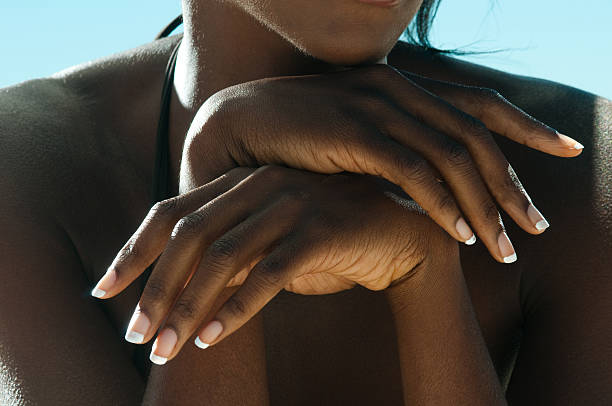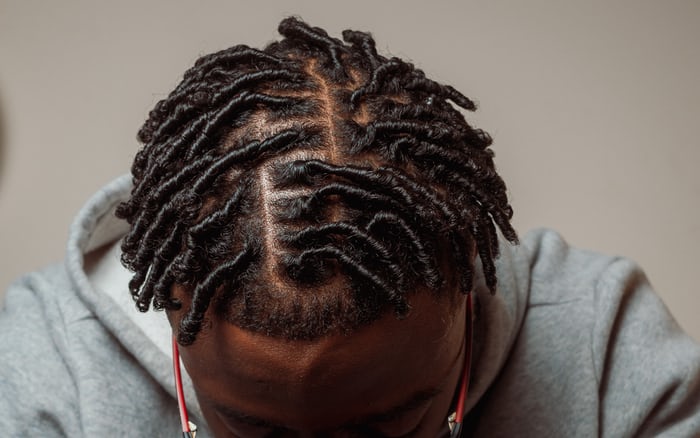It can be so annoying waking up to a tangled mess of hair every morning or how constantly battling frizz and breakage, even though you’ve invested in expensive hair products. Many people struggle to keep their hair looking healthy and beautiful, especially when it comes to protecting it while they sleep.
There are many ways to protect your hair while you sleep because all the tossing, turning, and other activities that take place while you’re fast asleep can cause significant damage without you even realizing it.
Read on to find out some precautions you can take to protect your hair while sleeping:
7 Ways to Protect Your Hair While Sleeping
1. Brush your hair before bed
Before you go to bed, brush your hair softly from the roots at the scalp to the tips. This detangles your hair and evenly distributes the natural oils from your scalp.
Use a boar bristle brush or a wide-tooth comb to brush your hair every night for optimal results. You must gently comb your hair and refrain from going overboard. Furthermore, avoid brushing wet hair.
2. Don’t sleep with damp hair
Avoid sleeping with damp hair. Damp hair is extremely fragile and can easily become infected with fungi. Additionally, sleeping with wet hair after a shower can cause significant hair loss.
Moreover, wet hair breaks easily and might become unruly in the morning. As a result, it is best to avoid washing your hair at night. If it is unavoidable, ensure your hair is completely dry before bedtime.
3. Dress in loose clothing
Loose clothing is ideal for sleeping because it allows your hair to move freely and not get caught in the bedding.
Wearing tight clothes or something that pulls or tugs on your head can cause inflammation and breakage. Loose clothing also prevents tangled knots from forming in the sheets (which happen when you’re sleeping).
4. Don’t sleep with your hair tied up
While sleeping with your hair in a messy bun or high ponytail may seem cute and harmless, the stress of wearing it up for a long time might cause damage to your hair in the long run.
Also, avoid sleeping with your hair completely loose, as loose hair can tangle. Sleep with it down instead, and if you must tie your hair back, go for a low ponytail or loose braids.
5. Use a silk pillowcase
If you have sensitive skin, a silk pillowcase can be a great alternative to cotton. Silk is a softer material, which means it won’t cause breakouts or irritation as cotton does.
It also doesn’t retain moisture as much as cotton, so if you wake up with dry hair in the morning and need some extra hydration before styling your locks (and who doesn’t?!), using a silk pillowcase will help keep them from becoming tangled at night.
6. Wear a bonnet to bed
Wearing a bonnet to bed is an excellent way to provide your hair with physical protection at night.
Ensure the bonnet comfortably fits your head; it won’t do you any good if it slips off while sleeping or is too tight.
Some bonnets are pre-sewn into the shape of a cap, whereas others arrive flat, giving you more freedom in shaping and sizing your bonnet. It’s better to go for a silk bonnet with good reviews.
7. Use conditioner on your hair
Use conditioner on your hair before bed. Conditioner helps to keep your hair soft and smooth, which can help prevent hair breakage.
Use a small amount of conditioner if you have fine or damaged strands. Too much may make your hair look greasy, so use just one tablespoon instead of two or three tablespoons, as most brands recommend.
Conclusion
Hair breakage and other issues might result from neglecting your hair’s health. Learning how to protect your hair while sleep is imperative for someone who cares about their hair. While you may already have a nighttime skincare routine, developing a nighttime hair regimen will ensure you wake up with softer, more lively, and frizz-free hair.
YOU SHOULD ALSO READ:
- How to Care For Your Natural Hair in Nigeria
- How To Take Care Of Your Hair And Make It Grow
- How to Care for Your Dreadlocks
- How to Care For Your Grey Hair
- How to Grow Virgin Hair in Nigeria
- 12 Pretty Ways to Style Natural Hair
- How To Keep Your Hair Healthy After Dying It
Collins Nwokolo is a human physiologist, writer and health enthusiast. He loves writing helpful articles on health and fitness, which he enjoys sharing with everyone.










